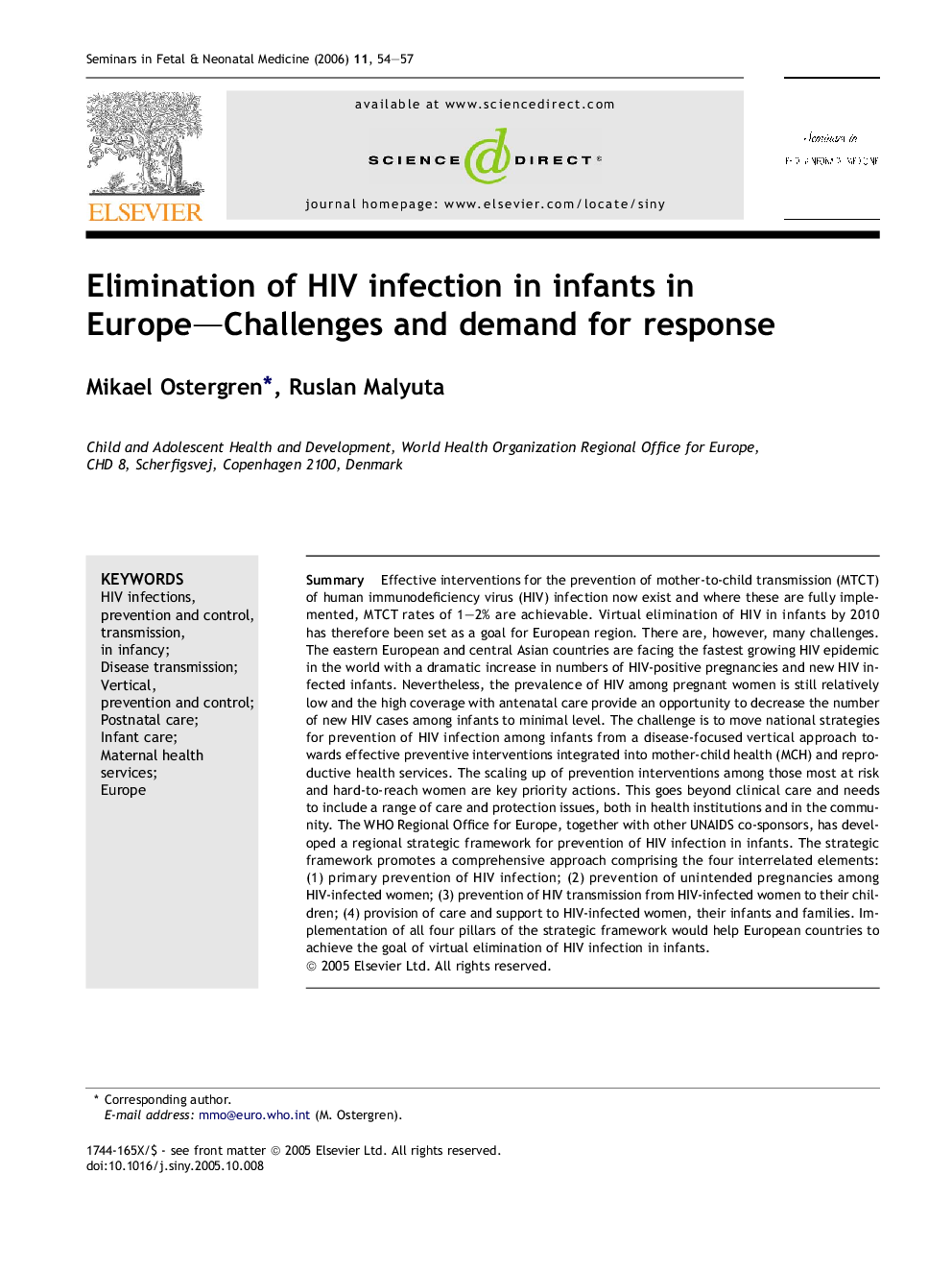| کد مقاله | کد نشریه | سال انتشار | مقاله انگلیسی | نسخه تمام متن |
|---|---|---|---|---|
| 3974611 | 1257004 | 2006 | 4 صفحه PDF | دانلود رایگان |

SummaryEffective interventions for the prevention of mother-to-child transmission (MTCT) of human immunodeficiency virus (HIV) infection now exist and where these are fully implemented, MTCT rates of 1–2% are achievable. Virtual elimination of HIV in infants by 2010 has therefore been set as a goal for European region. There are, however, many challenges. The eastern European and central Asian countries are facing the fastest growing HIV epidemic in the world with a dramatic increase in numbers of HIV-positive pregnancies and new HIV infected infants. Nevertheless, the prevalence of HIV among pregnant women is still relatively low and the high coverage with antenatal care provide an opportunity to decrease the number of new HIV cases among infants to minimal level. The challenge is to move national strategies for prevention of HIV infection among infants from a disease-focused vertical approach towards effective preventive interventions integrated into mother-child health (MCH) and reproductive health services. The scaling up of prevention interventions among those most at risk and hard-to-reach women are key priority actions. This goes beyond clinical care and needs to include a range of care and protection issues, both in health institutions and in the community. The WHO Regional Office for Europe, together with other UNAIDS co-sponsors, has developed a regional strategic framework for prevention of HIV infection in infants. The strategic framework promotes a comprehensive approach comprising the four interrelated elements: (1) primary prevention of HIV infection; (2) prevention of unintended pregnancies among HIV-infected women; (3) prevention of HIV transmission from HIV-infected women to their children; (4) provision of care and support to HIV-infected women, their infants and families. Implementation of all four pillars of the strategic framework would help European countries to achieve the goal of virtual elimination of HIV infection in infants.
Journal: Seminars in Fetal and Neonatal Medicine - Volume 11, Issue 1, February 2006, Pages 54–57